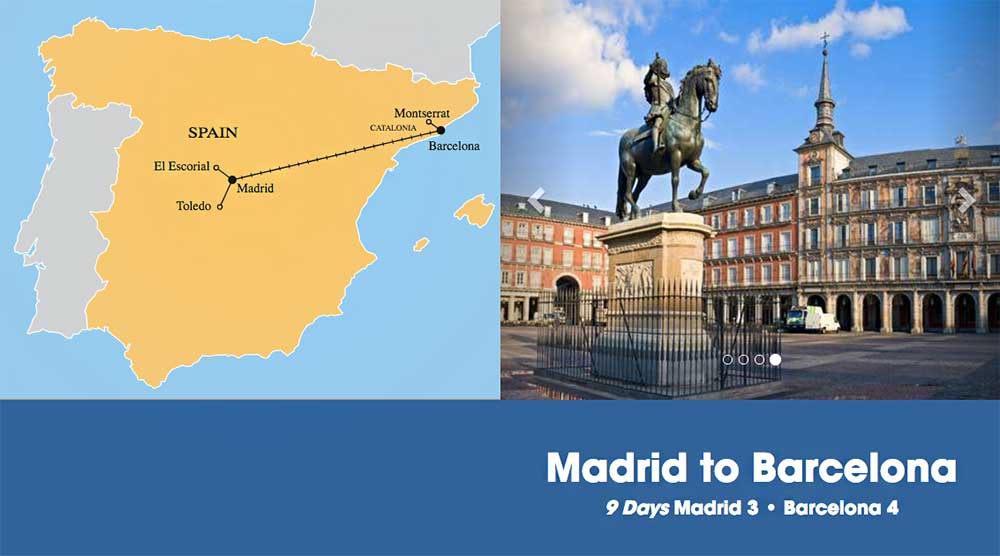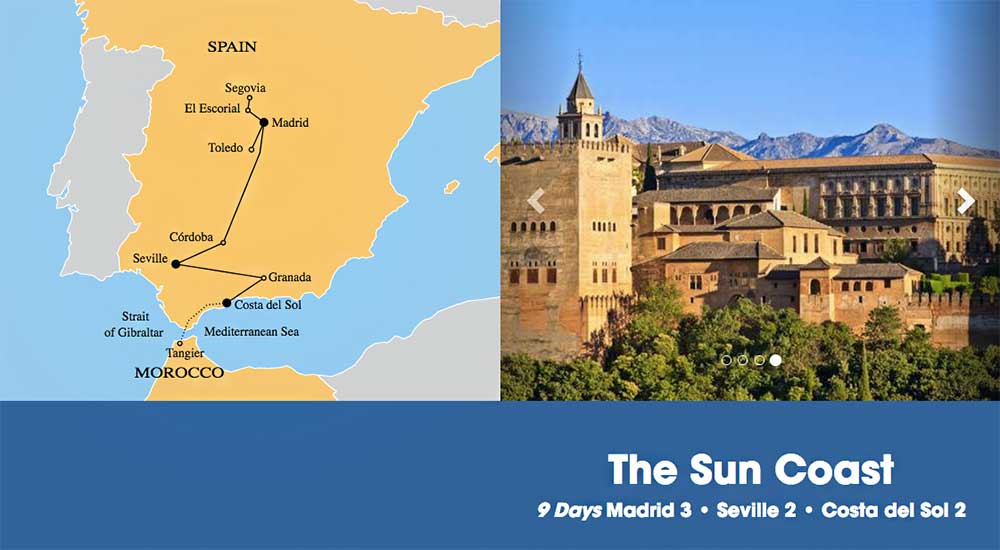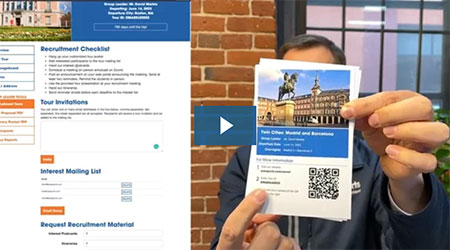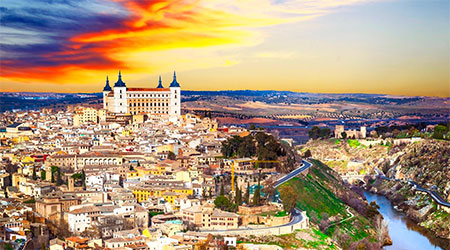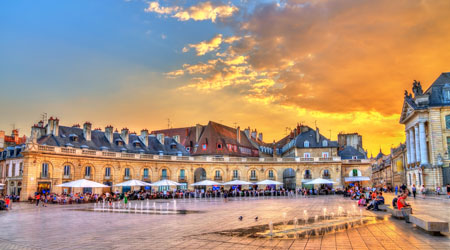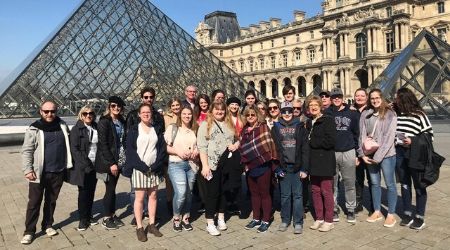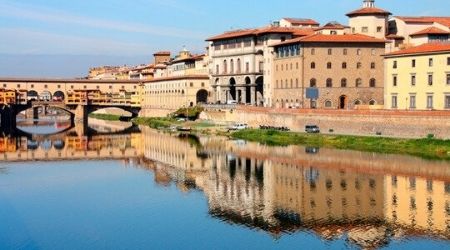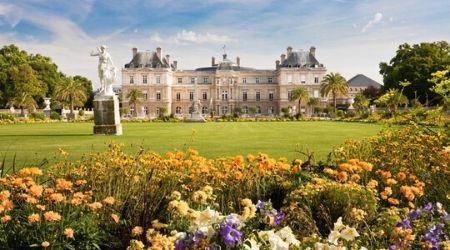April 11, 2017
City Spotlight: Madrid
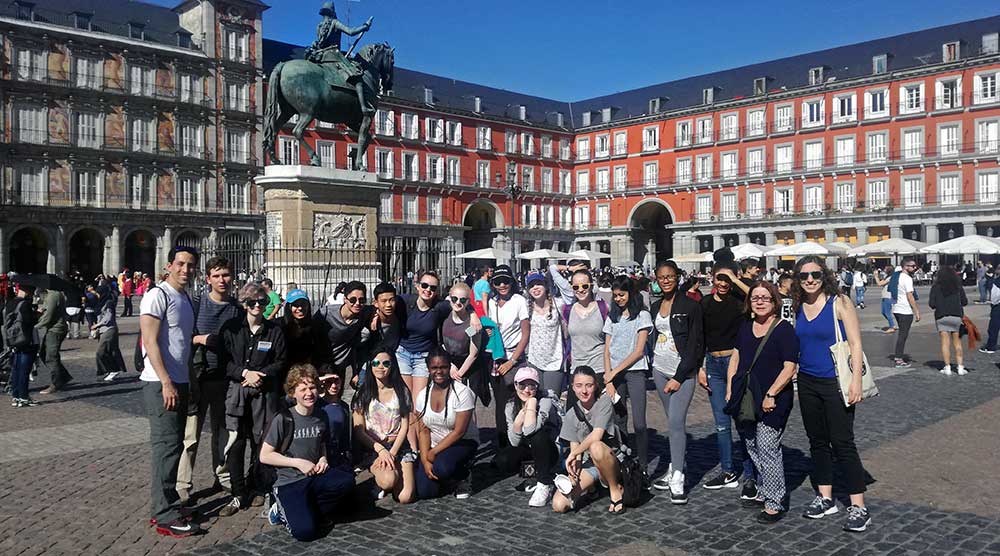
Spain’s capital, and largest city, is home to about 3,500,000 madrileños. Madrid is situated high up on the plains of Castile. At 2,200 feet above sea level, it is the highest capital city in Europe. Just to the north are the Guadarrama Mountains, snow-capped in winter. Madrid is more or less in the center of the country. Its buzzing streets throb with life 24 hours a day, 365 days a year. At the same time, Madrid claims to have more green space than any other city in the western world. In terms of its museums and cultural attractions, Madrid rivals many other cities.
MUSEUMS
Madrid is one of the world’s greatest museum cities. Its fame rests on 3 museums (that are by no means the only ones in the city) which together form the triángulo de arte or the triangle of art.
Museo del Prado
This is the ultimate place of homage for lovers of Spanish painting. The unparalleled selection of works here runs the gamut from joyous innocence to profound cynicism, from provocative to the horrors of war, from love of his fellow man to the depths of internal despair. What’s more, if you get the chance, there’s more to the museum than just Spanish painting. The Spanish monarchs were avid collectors of Italian and Flemish paintings as well.
Centro de Arte Reina Sofía
Located in a beautifully converted hospital building just off the Paseo del Prado, this fairly new museum is dedicated to the art of the 20th century. Most notable are the collections of the three “greats” of modern Spanish painting: Joan Miró, Salvador Dalí and Pablo Picasso. The highlight of the museum is Picasso’s notable painting of the Spanish Civil War – perhaps the single most famous work of art of the modern era, Guernica.
Museo Thyssen-Bornemisza
This is the newest and the least-known museum of Madrid’s big three, but that’s not to say it isn’t worth it. Whatever your own tastes, they are catered to here. There is everything from Rubens, Titian, Caravaggio and van Dyck to Mondrian, Picasso, Magritte, Rothko and Jackson Pollock, as well as the English landscape painters of the 18th century. It has one of the best collections of French Impressionists to be found outside Paris.
SIGHTSEEING
The Palacio Real
The Palacio Real was the old palace of the Bourbon kings of Spain. The palace’s greatest appeal lies in the magnificent decoration of the rooms you’ll visit, at times simply breathtaking. Among the highlights are the Gasparini Rooms (the private apartments of King Carlos III) with their exuberant Rococo detailing; the splendidly regal Throne Room; and the vast Banqueting Hall, with its table almost the size of a football field, seating 140 people. The palace has 2,800 rooms and outside the Prado, this is Madrid’s top attraction.
Plaza Mayor
Many call the Plaza Mayor the loveliest square in the world: It may no longer be the heart of Madrid life – that has been taken over by the Puerta del Sol – but this quiet, grand and austerely beautiful square is and always will be symbolic of the city and at the heart of Spanish history.
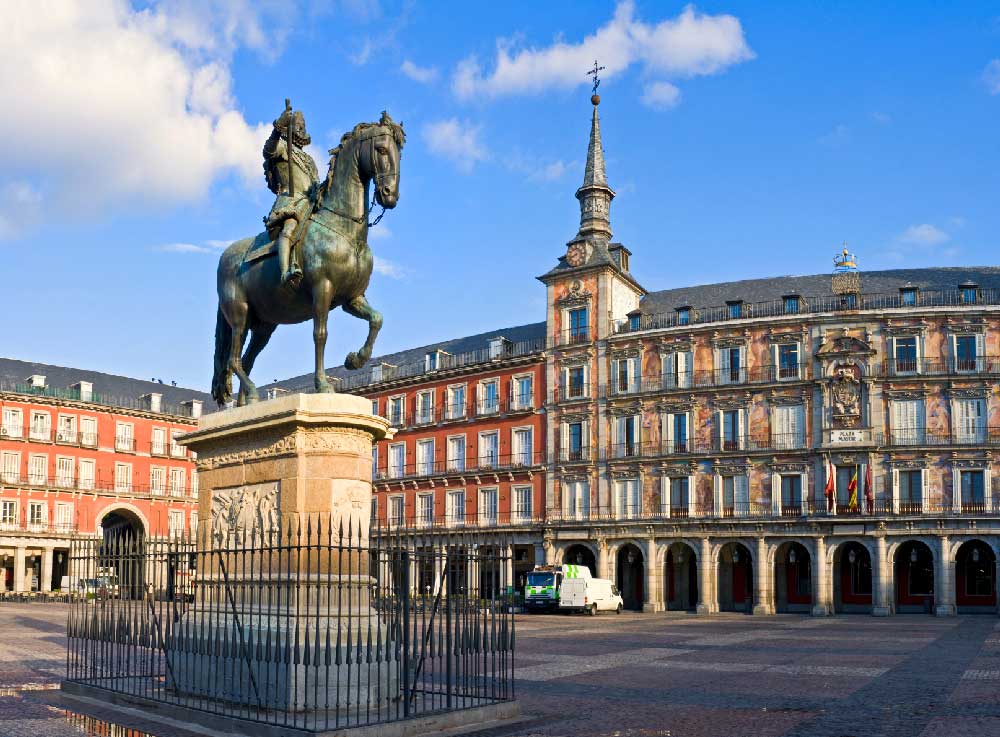
Templo de Debod
It may be a bit of a surprise to come across a genuine Egyptian temple in the middle of a park in the center of a city over a thousand miles from Egypt, but there is one in Madrid. It’s called the Templo de Debod. This hauntingly beautiful building from the 4th century BC once graced the banks of the Nile.
Parque del Buen Retiro
Madrid is blessed with one of the most attractive city center parks in Europe, the Parque del Buen Retiro: This enormous park once belonged to the rulers of the country whom you can see immortalized in graceful statues which line the sleepy alleys.
Ermita de San Antonio de la Florida
If you just can’t get enough of Goya, even after your visit to the Prado, your next stop should be the Ermita de San Antonio de la Florida. Here he painted on the cupola his finest frescoes, in the amazingly short time of just four months. This pretty little chapel also contains the body of Goya. His remains were transferred here from Bordeaux where he died in exile in 1828.
FOOD
When many think of Spanish food, they think tapas. Tapas are a wide variety of small Spanish savory dishes, typically served with drinks at a bar. Some of the most popular tapas include:
- Chorizo - a kind of spicy sausage
- Patatas bravas - fried potato wedges smothered in a spicy sauce
- Calamares - battered and deep-fried squid
- Croquetas de Jamón – ham croquettes
- Pulpo gallego - octopus, in olive oil with onions and sea salt
- Gambas al ajillo - shrimp deep-fried in olive oil with lots of garlic, served sizzling hot
Spanish food is distinctly Mediterranean (everything with garlic and olive oil) and extremely varied, as you would expect in a country of such regional diversity. From the mariscadas (seafood platters) of Galicia to the pescaitos fritos (little fried fish) of Andalucía; from the cordero asado (roast lamb) of the Castilian plains to paella valenciana (rice sprinkled with saffron and decorated with anything from peas to chicken to shrimp, or all of these); from the migas of Extremadura (fried bread crumbs) to the the big roasts of beef in Navarre or the Basque Country. ¡Buen provecho!
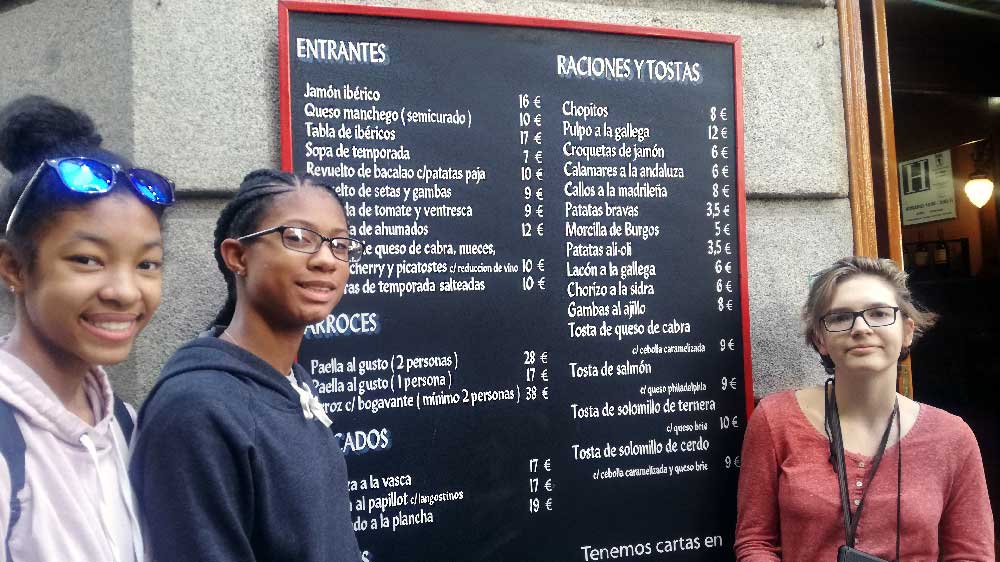
HOLIDAYS AND CELEBRATIONS
Spain is a Catholic country so feast days and holidays of the Roman Catholic Church are official national holidays in Spain. In addition to religious and national holidays, the autonomous regions of Spain have their own local holidays. Madrid celebrates its huge fiesta during the month of May, when the Fiesta de San Isidro has the whole city celebrating the anniversary of the city’s patron saint. This is when the really big bullfights take place in the Plaza de Toros de las Ventas. In Spain, holidays are observed on the day they fall, not moved to a Monday or Friday. Most businesses shut down, including banks, shops, and many cafes.
Spanish fiestas are a mixture of religious observance and endless, loud, exuberant partying. People will dress up in their local traditional costumes, dance the local traditional dances and party all night. In the afternoon, they head to the bullring...
The Bullring
The bullring in Madrid is the number one venue in Spain – for size, atmosphere, beauty, knowledgeability of the crowd and quality of the corridas. It’s called the Plaza de Toros Monumental de las Ventas, or just Las Ventas for short. Bullfighting is no mere sport for the Spaniards — it is an institution. It just might be a key to understanding what Spain is all about: in the crowded tiers of the arena is displayed the gamut of Mediterranean – emotions from love, passion, and honor to anger, fury and fanaticism. ¡Olé!
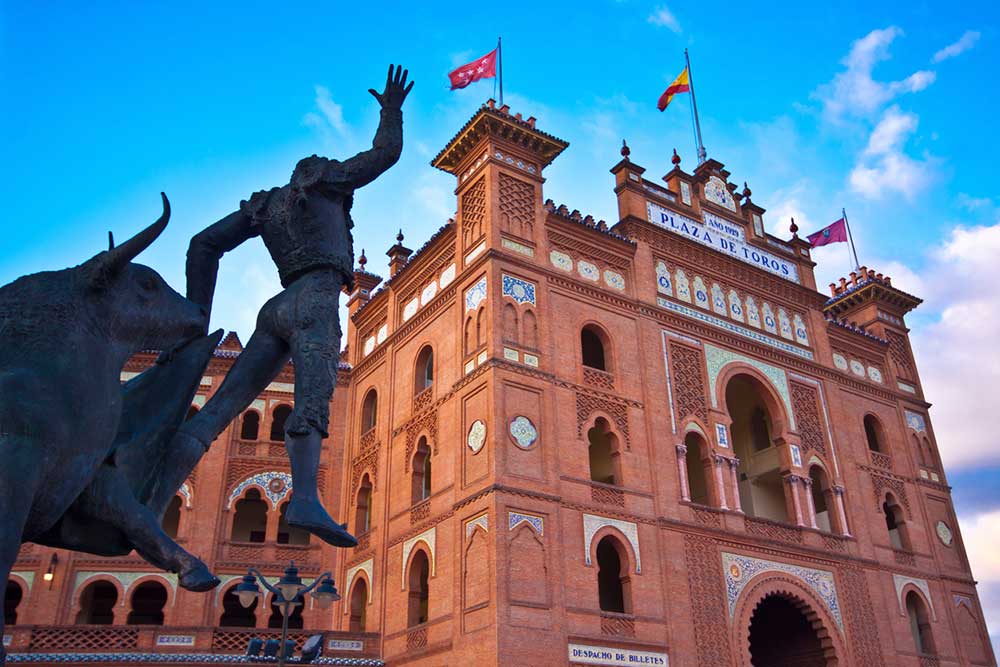
Flamenco “the lords and ladies of the dance”
The corrida is over, you’ve eaten a round of tapas and a paella dinner. Now, it’s off to the tablao for a quintessential Spanish experience – an evening of Flamenco music and dance. The venue is small and dark. A guitarist or two sit in a chair against the back wall of the stage. Gradually, the dancers appear. The women are likely to be dressed in flamboyant, colorful, flowing dresses. The men will be wearing tight, black clothes. The music is rhythmic, complex, fast and inviting to the dance. The singing is powerful and emotive. The dances are melancholy and exuberant. Perhaps this is why flamenco is such a perfect expression of Spain and Spanish life.
Zarzuela “of costumes and castanets”
Flamenco may be quintessentially Spanish but it’s also 100% southern, from the region of Andalucía. If you want to see something in the evening which is really typical of Madrid, check in the local “What’s On?” guides like the Guía del Ocio to see if there is any Zarzuela playing. In the summer, there is often open-air performances in Madrid’s amusement park, the Parque de Atracciones in the Casa de Campo. It’s a kind of 19th-century Spanish light opera, musetta in a mantilla. The tunes are very catchy, the costumes are great and the atmosphere is 100% Madrid.
Beyond Madrid’s grand architectural set pieces, world-class array of museums and cultural attractions, it is the inviting lifestyle that sets Madrid apart. It is a city of immense energy, constantly growing, constantly buzzing with life. To its great credit, it is also a city of parks and quiet places. In short, it is a joyous capital city, one of the finest that Europe has to offer!
Ready to explore Madrid with your students?
Check out Madrid to Barcelona or The Sun Coast
Category: For Teachers, Travel Inspiration
